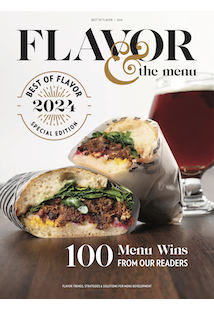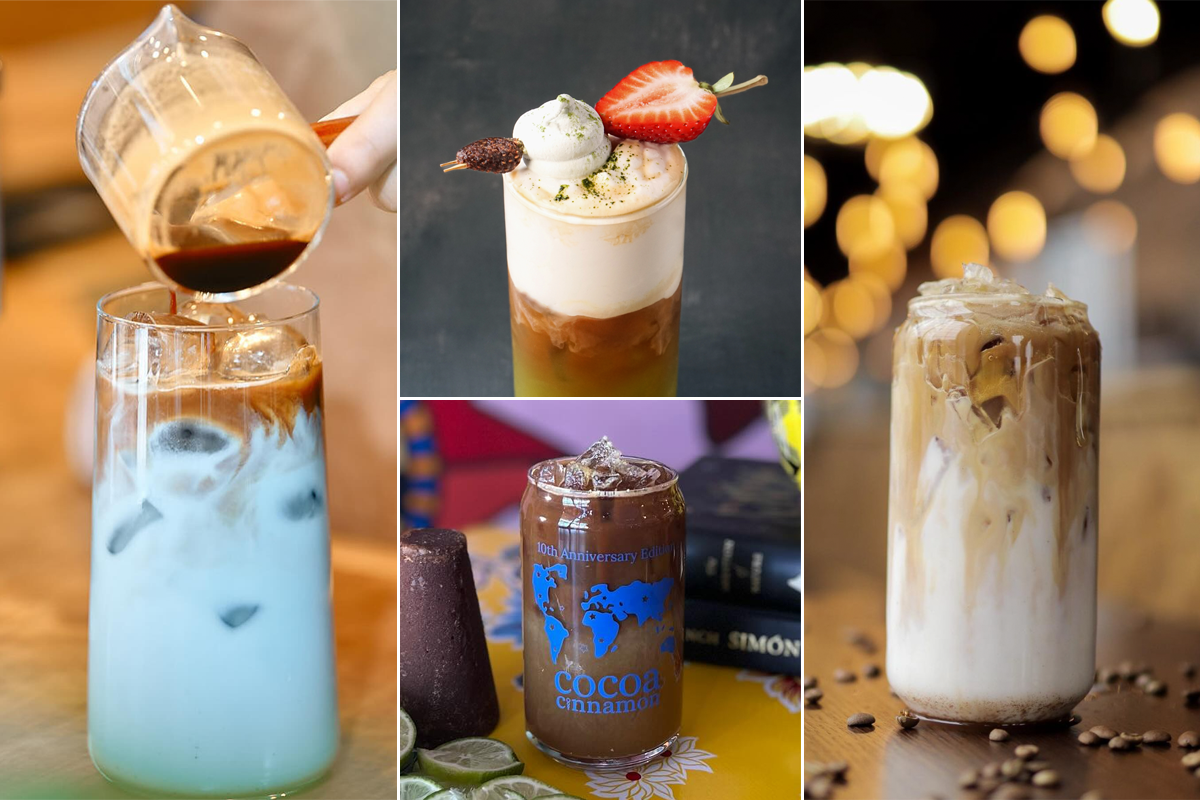
3 Regions Brimming With Coffee Inspiration
How to introduce global flavors into specialty concoctions
3 Regions Brimming With Coffee Inspiration
How to introduce global flavors into specialty concoctions
By Nicole Duncan
June 27, 2024
By Nicole Duncan
June 27, 2024
Although coffee is one of the most ubiquitous beverages across the world, its defining characteristics vary from country to country, culture to culture. European espresso-based drinks like the cappuccino, café au lait and cortado have become de rigueur in U.S. cafés., as have high-grade beans featuring inimitable notes of the roasting method and place of origin. But other variations, such as Turkish coffee, Cuban colada and café Touba (a pepper-infused Senegalese coffee) remain sparse, usually limited to concepts that specialize in authentic fare.
Mainstream U.S. consumers might not yet be ready for some of these traditional beverages, but heightened interest in both global cuisines and flavor-forward drinks hint at certain possibilities. “Take flavors from other countries, but look at the food flavors first. Look at the food pairings, and consider how that translates into beverages,” says Kathy Casey, president and CEO of Kathy Casey Food Studios – Liquid Kitchen. Casey, who is also a chef and restaurant owner, credits her culinary background with why she looks to food trends for beverage ideas. At the same time, she’s noticed coffee and other beverages like bubble tea and smoothies going toe to toe with snacks and other small bites.
“Coffee drinks really are snacks. They usually have some kind of fun component that’s in them. They’re more of a treat,” she explains. By incorporating intriguing toppings, flavor-infused syrups, different milks and other global ingredients, menu developers can introduce guests to new flavor systems in a familiar—and fun—format that plays across multiple dayparts. Plus, consumers are willing to splurge on specialty drinks, making globally inspired coffee all the more appealing to foodservice operators. Here, we highlight three regions whose flavors and ingredients are primed for coffee applications across U.S. menus.
Asia: Bold Flavors, Lavish Presentations
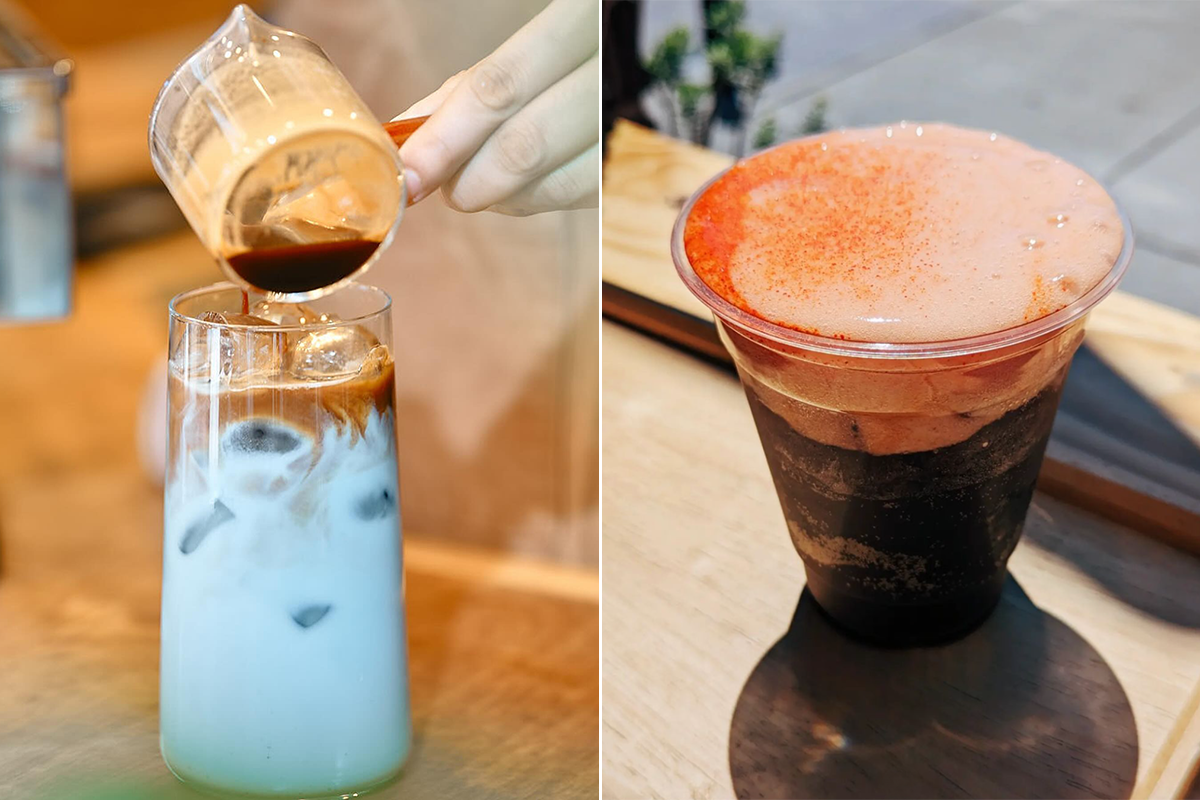 Photo Credit: Blue Brown Café / Paper Son Coffee
Photo Credit: Blue Brown Café / Paper Son Coffee The namesake drink at Blue Brown Café is infused with butterfly pea flower (left), while Paper Son Coffee’s Guava Pillow tops effervescent coffee with guava purée and a dusting of li hing mui powder (right).
Matcha, bubble tea, Thai iced tea and chai have all found a dedicated fan base stateside, but Asian-inspired innovations in coffee remain a big opportunity. “I think Asia is probably the strongest contender for influencing coffees at this point. Asian flavors are fantastic in coffee,” Casey says. She recently concocted a specialty beverage that hits the trifecta of global flavor, distinct mouthfeel and intricate presentation. The Kyoto Cloud is served over ice in a tall Collins glass with a steamed matcha base featuring Monin Matcha Green Tea Syrup, followed by a layer of salted strawberry cold foam. A shot of espresso is poured through the “cloud” to create another layer in between the matcha and foam. It’s all crowned with a skewered homemade matcha marshmallow, a candied strawberry and fresh strawberry.
“I’m in Seattle, and there are a lot of Asian coffee concepts popping up that are super cool,” Casey notes. But these cafés and coffee shops are appearing across the country, too. In Brooklyn, New York, newly opened Blue Brown Café serves the obligatory Thai iced tea (with a bright lemon twist) plus standard espresso and coffee drinks. But where it shines is the specialty menu, which includes a Thai Iced Coffee, as well as the Dirty Thai Tea Latte—a fresh spin on the better-known dirty chai. The Expresso with Palm Juice brings a luscious texture and subtle sweetness to an otherwise bitter double shot, while the café’s signature drink, the Blue Brown Latte, sports a sky-blue hue thanks to an infusion of butterfly pea flower.
In San Francisco, Paper Son Coffee is fusing familiar coffee drinks with pan-Asian flavors and textures. The Guava Pillow starts with an effervescent coffee concentrate, which, true to its name, is topped with a pillowy layer of guava purée. It’s finished with a dusting of li hing mui powder, a spice made of pickled and then dried Chinese plums. Another signature offering, the Pandan Aerocano plays on the internet’s current obsession over so-called aerocanos, a nitro-like Americano. At Paper Son, the trending drink is extra flavorful and a little thicker thanks to pandan syrup; the overall presentation is beefed up through a pandan leaf garnish that calls to mind a tropical cocktail.
For now, larger coffee brands might be wary of these bold flavors; to wit, Starbucks serves seasonal cherry blossom lattes in Japan, Korea and China, but these items have yet to grace domestic menus. Nevertheless, the slow build of smaller operations embracing out-of-the-box specialties could signal a market shift. “This trend has been coming on for a long time,” Casey says, pointing to international chains like Happy Lemon making inroads. “Bubble tea is really kind of the first concept in the U.S. to have so many different flavors. So I think it’s easier to build upon that because people are familiar with it.”
The Middle East: The Heart of Café Culture
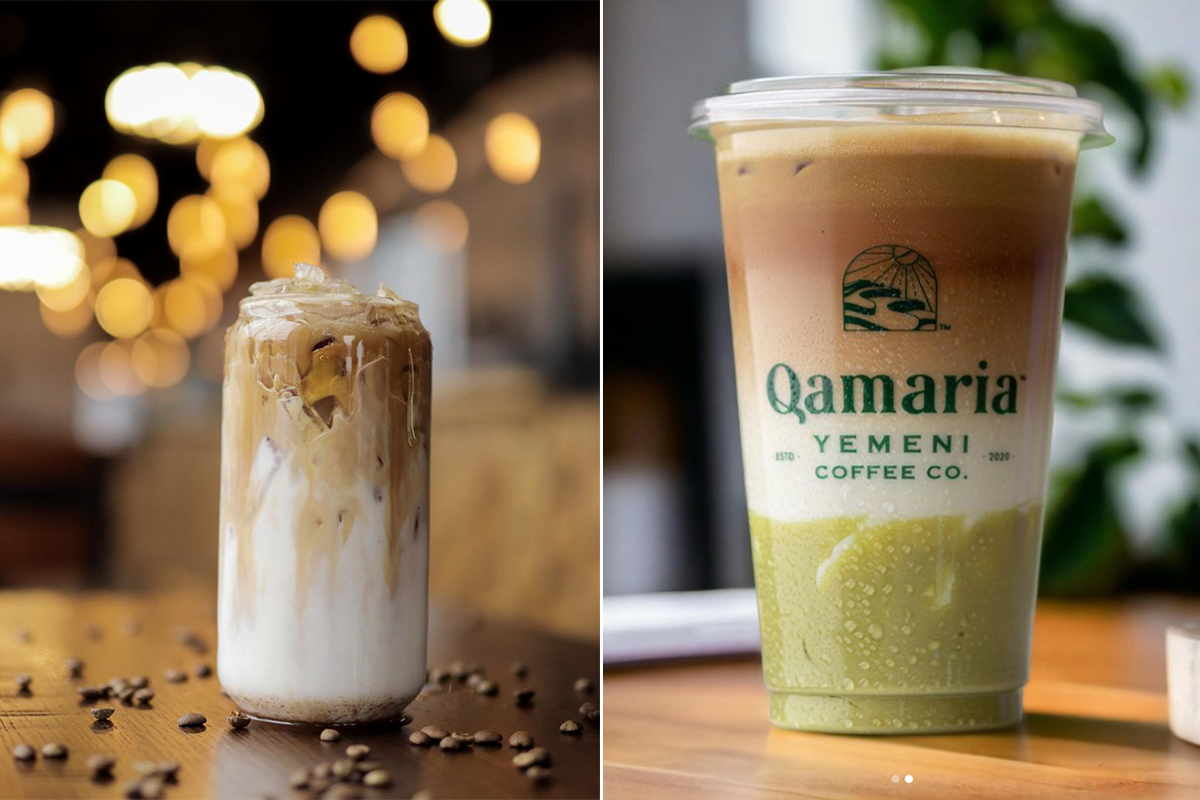 Photo Credit: Haraz Coffee House / Qamaria Yemeni Coffee Co.
Photo Credit: Haraz Coffee House / Qamaria Yemeni Coffee Co. Warming spices like cardamom, ginger and cinnamon shine in the Iced Haraz Latte (left) at Haraz Coffee House, while the Pistachio Latte (right) from Qamaria brings sweet, nutty notes.
Another region that’s gaining traction in the coffee category is the Middle East. “I think that we should be looking toward what the Middle East is doing because instead of having alcohol at bars, they’ll often go to these beverage cafés that have so many different, creative offerings,” says Casey, who has done work in the region. She recalls encountering one especially avant-garde drink: a tiered beverage featuring distinctive layers of rose, apricot and avocado, each blended with coffee.
Yemeni cafés in particular have become more prominent in recent years. Just as Scandi cafés bring a cultural dimension to the coffee house experience, so too do Yemeni ones. Unlike the typical American café, business doesn’t peter out as the day progresses; if anything, these concepts become more lively in the evenings and keep their doors open late into the night.
Michigan-based Haraz Coffee House serves a variety of traditional coffee blends, most of which are made with warm spices; several also use cascara (dried coffee husks) either in place of or in addition to the coffee beans. For example, the Khaleeji blend features finely ground Saudi-style coffee beans with cardamom and saffron, while the Jubani comprises light-roast coffee, cascara, ginger and cinnamon. These coffees are also applied to specialty beverages. The namesake Haraz Latte blends espresso made from the brand’s signature medium roast with milk and a spice blend of cardamom, cinnamon and ginger.
Middle Eastern-inspired coffee is clearly striking a cord with American consumers. Haraz Coffee House now spans five states and 10 locations with a half a dozen more in the pipeline. Another Michigan-based brand, Qamaria Yemeni Coffee Co., has a dozen units across five states plus a food truck in Washington, D.C. It serves a selection of spice-infused, traditional Yemeni beverages as well as Turkish coffee. Its signature hot and iced drinks include the namesake Qamaria Latte (a double shot of espresso with steamed milk, cardamom and cinnamon) and the Pistachio Latte, which is blended with pistachio sauce.
Casey advises menu developers to try simple plus-ones as a straightforward way of experimenting with global flavors in coffee. Garnishes and toppers with textural intrigue and eye-popping appeal are one route. Syrups, sauces and other infusions are other easy mix-ins that can be adjusted in intensity and layered with one another. “It’s nice to add in different flavors within a flavor. You could use a pistachio syrup but then add a pump of strawberry-concentrated flavor to get a double-flavor whammy,” she says.
Latin America: From Cocktails to Coffee
 Photo Credit: Cocoa Cinnamon
Photo Credit: Cocoa Cinnamon Cocoa Cinnamon taps Latin America’s rich flavor culture through drinks like the Dr. Durham (vanilla bean syrup, maca and ginger root powders, black lava salt) and the Venezuelan Gatorade, which adds espresso to a traditional citrus beverage.
Like the Middle East, Latin America is steeped in coffee culture as both a major consumer and producer. But while coffee is a quotidian habit in countries across the region, the drinks themselves aren’t especially flamboyant, especially when compared to the over-the-top concoctions of the U.S. Casey says Latin American flavors haven’t permeated the coffee category the way Asia has, but she sees potential, especially when zeroing in on Mexico, whose cocktail boom could suggest a future coffee wave.
“Mexico is on my mind. If you look at the top 50 bars list, a lot of them are in Mexico City. They’re doing really innovative stuff in the alcohol area. To me that signals it’s only a matter of time for creativity to come into other beverages,” she says. And while coffee shops aren’t common in Mexico, artisanal bakeries are, and Casey thinks they could be a natural on-ramp for elevated beverages.
Still, Latin American cafés are popping up stateside, even if they’re not catching fire at the same pace as Asian and Middle Eastern-inspired concepts. As with the latter region, warming spices play a strong role in Latin American coffee creations—as do chiles and other ingredients that capitalize on the sweet heat trend. In Durham, N.C., three-unit Cocoa Cinnamon specializes in such drinks, from sipping chocolates to flavor-packed lattes and mochas. The menu includes year-round items and limited-time “wonder” drinks.
One permanent option, the Dr. Durham, features vanilla bean syrup mixed with maca and ginger root powders and topped with black lava salt. A summertime offering, Mi Querida Patria de Voces Inocentes, is a Salvadorian horchata iced latte topped with cinnamon and nutmeg powder. Another, the Venezuelan Gatorade, begins with papelón con limón—a traditional beverage that blends pressed brown sugar, lime juice and water—and adds espresso to the recipe.
A World of Possibilities
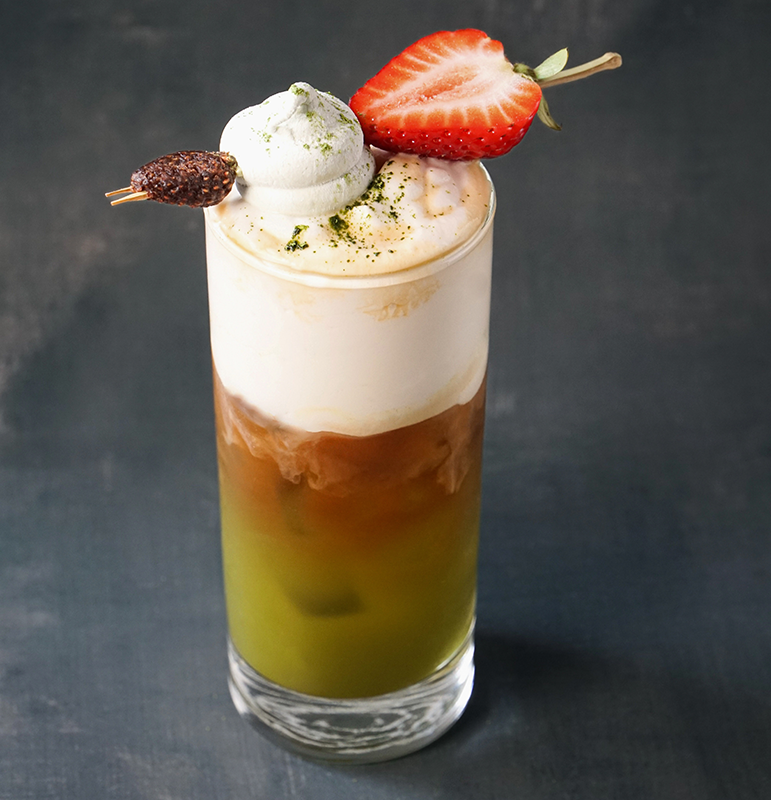 Photo Credit: Liquid Kitchen, Maya Alderman
Photo Credit: Liquid Kitchen, Maya Alderman A blend of matcha, salted strawberry cold foam and espresso, Kathy Casey’s Kyoto Cloud embraces global flavor while delivering a unique presentation and fluffy texture.
Exploring global flavors, whether in food or beverage, is often a menu developer’s dream, providing a playground of new ingredients, presentations and more. It can also be a boon to business. In addition to Gen Z and other novelty seekers, consumers with ties to the featured country or region could also be drawn to these menus. Cocoa Cinnamon serves a diverse clientele, with native Spanish speakers accounting for a considerable portion of business. Similarly, Haraz and Qamaria are grounded in Yemeni coffee culture and as such have a solid foundation of patrons with ties to the Middle East. Featuring a mix of both authentic and reinterpreted beverages can be a winning formula, particularly in areas in which consumers might not be as familiar with global cuisines.
And for operators wary of incorporating these international flavors into their menus, Casey recommends starting small with simple add-ons like crunchy toppings, frothy layers and even fizz. “Texture in beverages is a big thing right now with fluffy versus creamy versus sparkling,” she says. “If you have coffee on draft, that’s going to give a nice effervescence. Something fluffy on top could be really nice, too.”
About the Author
![]() Nicole Duncan is the digital managing editor of Flavor & the Menu. She's reported on the restaurant industry for a decade, most recently as the editor of FSR magazine. In 2021, she won a Folio award for her feature on restaurant tycoon Tilman Ferttita. The following year, FSR was awarded Best Overall Issue for its May 2022 issue featuring Andrew Zimmern. She has profiled well-known chefs including Paola Velez, Fabio Viviani and Daniel Boulud, but also relishes the opportunity to spotlight under-the-radar trends and innovators.
Nicole Duncan is the digital managing editor of Flavor & the Menu. She's reported on the restaurant industry for a decade, most recently as the editor of FSR magazine. In 2021, she won a Folio award for her feature on restaurant tycoon Tilman Ferttita. The following year, FSR was awarded Best Overall Issue for its May 2022 issue featuring Andrew Zimmern. She has profiled well-known chefs including Paola Velez, Fabio Viviani and Daniel Boulud, but also relishes the opportunity to spotlight under-the-radar trends and innovators.

